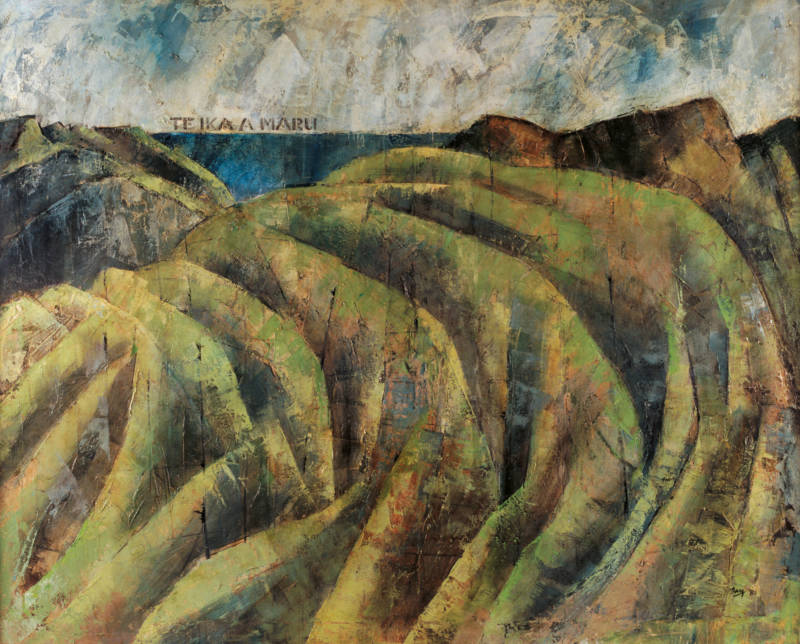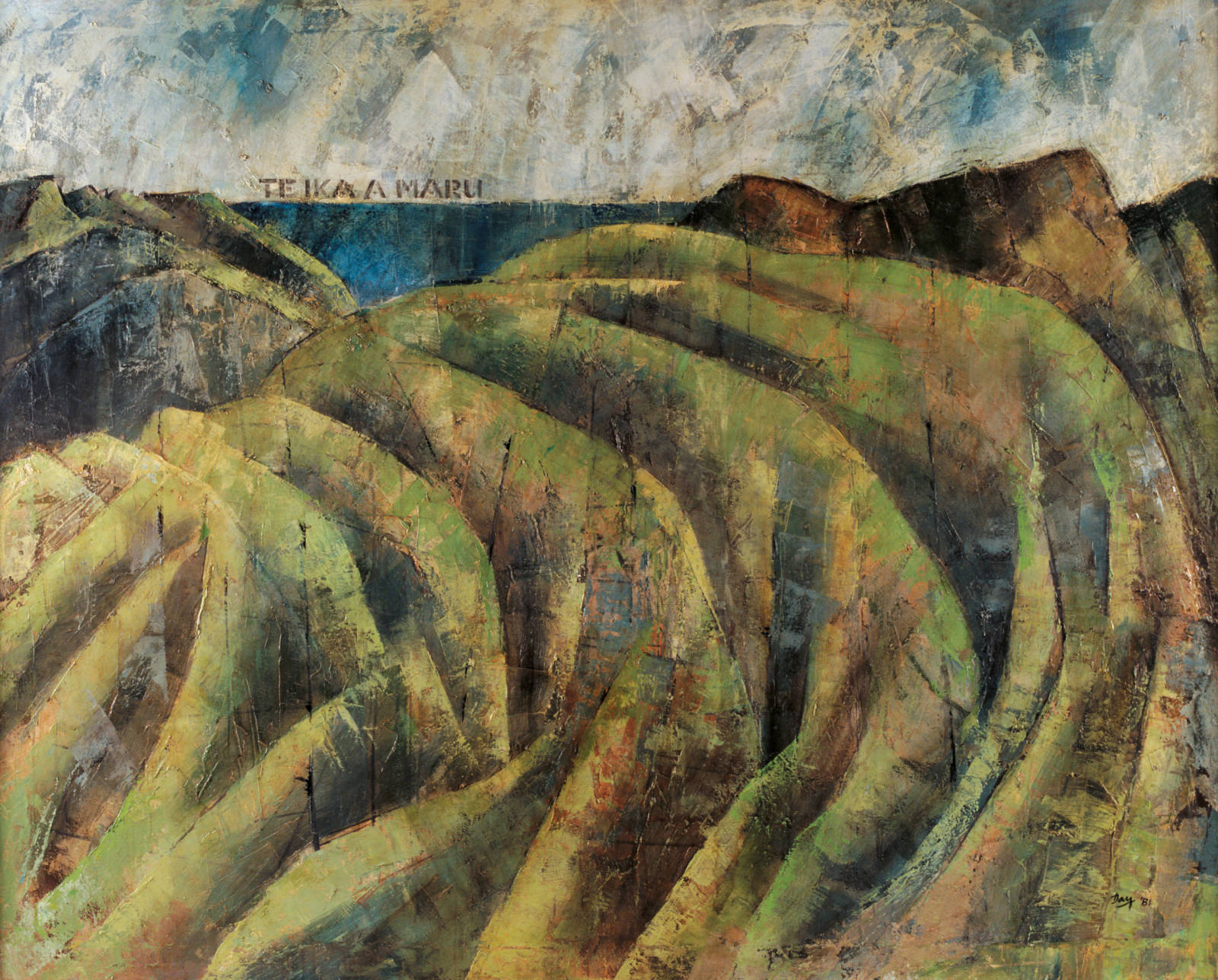DAY, Melvin;
Te Ika a Maru
1981
Oil on canvas
1200 x 1500mm

The following two texts were written for Te Huringa/Turning Points and reflect the curatorial approach taken for that exhibition.
Peter Shaw
This painting refers to the bay of the same name, translated as the Fish of Maru, on the outer western coast of Te Whanganui-a-Tara. It was a famous pā site. In 1848, a time of major changes in land ownership in the whole area, 350 acres of land suitable for cultivation was reserved for the people of Ohaua and Te Ika a Maru. However, in 1853, Donald McLean, representing the Land Purchase Department, bought this and other reserves. From then on, provision for Māori at the site was to be in the hands of the Government. Te Ika a Maru was designated as two numbered blocks. Following the issue of titles by the Native Land Court in 1895, the land eventually found its way into Pākehā hands.
The stencilled words ‘Te Ika a Maru’ positioned on the horizon above the bay and between the two headlands seem almost to reclaim the site by labelling it in an unmistakeable way.
Jo Diamond
Melvin Day’s deeply incised landforms resonate here with the dramatic energy of many hills and valleys in Aotearoa. The highly textured effects of impasto paint add the sense of a special and incisive connectedness between the artist and this convoluted terrain. The short, though significant, label ‘Te Ika a Maru’ indicates its significance to Māori people. Whilst this no doubt refers to a geographic location in the Wellington area, like many Māori place names, it also points to historical events dating far back before European arrival. The ridges and gorges of this location echo with heroic deeds, great and small events, epic and shorter journeys and numerous human lifetimes that responded in various ways to this natural and often challenging environment. Such historical narratives add impetus to Māori assertions of strong attachment to whenua.
Melvin Day adds to those stories in his own particular artistic way. He asserts his own attachments in the deliberate use of repeated green-toned forms that suggest both movement and topographical stasis. A flat though tonally glassy sea and scumbled, cloud-lit sky reverberate; the four words sit, somewhat immovably, on the horizon. Here, the artist’s consummate skill demonstrates how cultural divides can be bridged without facile and tokenistic overstatement but rather with deep respect for the land, sea and sky.
Inscriptions
Day '81 [l.r.]Exhibition History
Te Huringa/Turning Points: Pākehā Colonisation and Māori Empowerment, Sarjeant Gallery Te Whare o Rehua, Whanganui, 8 April to 16 July 2006 (toured)
Provenance
1981–
Challenge Collection (later Fletcher Trust Collection), purchased from Louise Beale Gallery, Te Whanganui-a-Tara, October 1981

